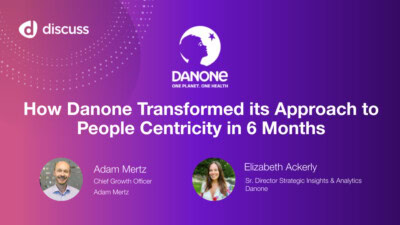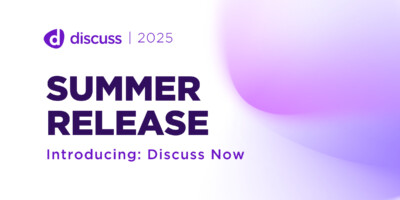The Ultimate Guide to Conducting a Focus Group Discussion

Immerse yourself in the minds of your target audience and unravel key insights that drive your success – enter the realm of Focus Group Discussions. In the fast-paced, digital era of 2023, these discussions have become more sophisticated yet essential tools in the market research landscape. Uncover their power with our Ultimate Guide to Conducting a Focus Group Discussion. Your chance to access actionable strategies and practical tips, allowing you not just to collect data, but to harness its immense potential. Buckle up for a journey into the core technique that provides businesses with a raw, unfiltered voice of their customers. A tool that bridges gaps stimulates innovation, and fuels growth – so potent yet often underutilized! Don’t miss this opportunity to master conducting focus groups and foster smarter business decisions!
Conducting a successful focus group involves several key steps that include identifying the topic for discussion, deciding on the questions or prompts to be used, recruiting participants, establishing ground rules, asking questions methodically, recording data through note-taking or audio/video recordings, and finally analyzing and interpreting the results. These steps require careful consideration throughout the process to ensure that valuable insights are collected from participants and can be used to inform business decisions.
Preparing for a Focus Group Discussion
Before diving into conducting a focus group discussion, proper preparation is key to ensuring the success of the session. Here are some important steps to take when preparing for a focus group discussion:
First and foremost, clearly define the purpose and objectives of the focus group. What specific insights or information are you seeking to gather? Having a clear understanding of what you hope to achieve will guide the entire process.
Next, choose a specific topic of discussion for each focus group session. This will help you narrow down your questions and prompts, allowing you to gather the necessary data. Prepare a list of open-ended questions that encourage participants to share their thoughts and experiences.
For example, if you are conducting a focus group discussion about a new product launch, your questions might include asking participants about their perception of the product, its features they find most appealing, and any potential improvements they would suggest.
Another important aspect of preparation is recruiting participants for the focus group. Consider reaching out to existing customers through email or social media outreach. You can also advertise on platforms such as social media or local community groups to recruit potential customers who align with your target audience.
Appointing a designated notetaker is crucial during the session. This person will be responsible for jotting down key points, general consensus among participants, unique individual responses, and any other significant takeaways. Their role is essential in capturing accurate data and insights from the discussion.
Lastly, create an inviting environment for your participants. Welcoming them warmly when they arrive and establishing ground rules at the beginning helps set the tone for an open and respectful conversation. Encourage participants to engage with one another while ensuring that everyone has an equal opportunity to speak.
With proper preparation in place, let’s now explore an overview of qualitative research methods commonly used in conducting focus group discussions.
Qualitative Research Methods: An Overview
Qualitative research methods play a vital role in gathering detailed insights and understanding the motivations, attitudes, and experiences of focus group participants. Here are some commonly used qualitative research methods:
One of the primary methods used in focus group discussions is open-ended questioning. This allows participants to express their thoughts freely, providing rich and diverse perspectives on the topic of discussion. Open-ended questions encourage deeper exploration of ideas and can lead to unexpected insights.
Another method often employed is probing. Probing helps moderators delve further into participants’ responses to gain a deeper understanding of their reasoning or emotions behind certain statements. Probing can take the form of asking follow-up questions, seeking clarification, or encouraging participants to expand on their initial answers.
Active listening is a crucial skill for moderators to possess. It involves paying close attention to what participants are saying, as well as their non-verbal cues such as body language and facial expressions. Actively listening allows moderators to pick up on valuable nuances that may not be explicitly stated.
In addition to these methods, group dynamics also play a significant role in qualitative research. Observing how participants interact with one another provides insights into social influence, consensus building, and individual contributions within the group.
For instance, an interesting dynamic might arise when a participant introduces a unique perspective that challenges the prevailing opinions within the group. This can lead to stimulating discussions and uncover new perspectives that might otherwise go unnoticed in an individual interview setting.
Now that we have explored the importance of preparing for a focus group discussion and gained an overview of qualitative research methods employed during these sessions, it’s time to put this knowledge into practice.
Choosing Participants: Key Criteria
When organizing a focus group discussion, one must carefully consider the selection of participants to ensure valuable and insightful discussions. The right mix of individuals can provide diverse perspectives and represent your target market effectively. Here are some key criteria to keep in mind when choosing participants for your focus group:
Let’s say you are conducting a focus group for a new skincare product targeted towards young professionals. In this case, it would be ideal to have participants who fall within the age range of your target audience, and have different skin types, lifestyles, and skincare concerns. This diversity will help gather a variety of opinions and insights that can shape your marketing strategy.
Firstly, consider including both current customers and potential customers in your focus group. Current customers can offer valuable feedback based on their experiences with your product or service, while potential customers can provide insights into their needs, preferences, and expectations.
Secondly, aim for a mix of demographic characteristics such as age, gender, occupation, and location. This variety allows you to capture different perspectives and identify any trends or patterns that may emerge during the discussion.
Furthermore, consider including participants with varying levels of familiarity with your industry or product niche. This can help generate a breadth of opinions, from those who are well-versed in the subject matter to those who may approach it from a fresh perspective.
Lastly, do not forget to consider the number of participants you want in your focus group. Avoid having too few participants as it may limit the range of perspectives shared during the discussion. On the other hand, having too many participants may make it challenging to facilitate meaningful conversations among all individuals.
By carefully selecting participants based on these key criteria specific to your product or service, you can create an engaging and productive focus group discussion that yields valuable insights.
- When organizing a focus group discussion, it is important to consider the selection of participants and ensure diversity in perspectives by including both current and potential customers, demographics such as age, gender, occupation, and location, familiarity levels with the industry or product niche, and a suitable number of participants. By doing this, you can create an engaging and productive focus group discussion that yields valuable insights for shaping your marketing strategy.
Creating an Effective Discussion Guide
Once you have chosen the participants for your focus group discussion, the next step is to create an effective discussion guide. A discussion guide acts as a roadmap for the session, ensuring that you cover all the necessary topics and gather relevant insights. Here are some key steps to consider when creating a discussion guide:
First and foremost, clearly define the objectives of your focus group. What specific information or feedback are you seeking from the participants? Having a clear understanding of your goals will help you structure the questions and prompts in a way that elicits meaningful responses.
Next, identify the main topics or themes you want to cover during the discussion. These topics should align with your objectives and reflect the areas where you seek insights. Break down each topic into subtopics or specific questions that will guide the conversation.
It’s important to strike a balance between open-ended questions and more specific ones. Open-ended questions encourage participants to share their thoughts and opinions freely, while specific questions can help gather more targeted information.
Consider using probing techniques to dive deeper into participants’ responses. If someone mentions an interesting point, ask follow-up questions to explore it further. This allows for a richer and more insightful conversation.
Structure your discussion guide in a logical flow, moving from general topics to more specific ones. This helps ensure that you cover all aspects and maintain a smooth conversation throughout the session.
Lastly, be flexible during the discussion and allow for spontaneous ideas or insights to emerge. While having a guide is essential, being open to unexpected contributions can lead to valuable discoveries.
By creating an effective discussion guide, you can facilitate a focused and engaging conversation that generates meaningful insights from your focus group participants.
Incorporating Open-Ended Questions
When conducting a focus group discussion, incorporating open-ended questions is crucial for gathering insightful and comprehensive responses from participants. Unlike closed-ended questions that elicit simple “yes” or “no” answers, open-ended questions encourage participants to express their thoughts, opinions, and experiences in more detail. This allows for a deeper understanding of their perspectives and provides valuable qualitative data.
By using open-ended questions, the focus group facilitator can create an environment that encourages participants to share their unique viewpoints and ideas. These questions should be thought-provoking and allow for a wide range of responses. For example, instead of asking “Did you like the new product?”, a more open-ended question could be “What are your thoughts on the new product? How does it compare to similar products in the market?”
Let’s imagine a focus group discussion about a new mobile app. The facilitator might ask participants questions like:
- “How would you describe your experience using the app?”
- “What are some features you liked or disliked about the app?”
- “Can you share any suggestions for improving the user interface?”
Asking open-ended questions not only helps gather diverse perspectives but also encourages participants to engage in meaningful conversations with each other. It allows them to build upon each other’s ideas and explore different angles of the topic at hand. By actively listening to these discussions, the facilitator can identify emerging themes or patterns that will inform decision-making and further exploration.
Now that we understand how incorporating open-ended questions can enhance the depth and quality of a focus group discussion, let’s shift our focus to managing the session effectively.
- According to a 2020 report from the Qualitative Research Consultants Association, around 95% of leading market research firms use focus groups or in-depth interviews to gather qualitative data.
- A study by the Strategic and Competitive Intelligence Professionals Association found that more than 50% of companies said focus groups helped stimulate brainstorming or idea generation.
- Another study concluded that focus groups led to modifications in approximately 65% of products tested pre-launch, illustrating their effectiveness in improving products before they reach the market.
Managing the Focus Group Session
To ensure a productive and successful focus group session, effective management is key. Here are some essential steps to consider:
- Welcome participants: Begin by warmly welcoming participants and introducing yourself as the facilitator. Make everyone feel comfortable and establish a positive atmosphere where participants feel encouraged to express their thoughts openly.
- Establish ground rules: Set clear ground rules at the beginning of the session to ensure that discussions remain respectful and focused. Encourage active listening, discourage interruptions, and emphasize the importance of confidentiality.
- Ask questions methodically: Use your prepared list of questions or discussion prompts to guide the conversation. Ask questions in a systematic manner, allowing everyone to contribute their insights. Ensure that each participant has an opportunity to share their thoughts.
- Encourage equal participation: Be mindful of the dynamics within the group and encourage quieter participants to share their perspectives. Create a safe space where everyone feels comfortable expressing themselves without fear of judgment or criticism.
- Manage time effectively: Keep an eye on the clock and ensure that discussions stay on track. Avoid spending too much time on one particular topic or allowing the conversation to veer off course. Maintain control over the flow of conversation while still allowing for organic dialogue.
- Capture key takeaways: Designate a notetaker who can document the general consensus, unique individual responses, and any significant themes that emerge during the discussion. These notes will serve as valuable references when analyzing and drawing insights from the focus group session.
For instance, imagine managing a focus group discussion about a new marketing campaign for a clothing brand. Throughout the session, you guide participants through various topics such as target audience, messaging, and preferred advertising channels.
By effectively managing the focus group session, you create an environment conducive to open and honest communication. This will facilitate meaningful discussions among participants, leading to valuable insights that can inform decision-making processes.
With a solid grasp of how to manage a focus group session effectively, we can now explore strategies for ensuring a conducive environment where participants feel comfortable sharing their thoughts freely.
Ensuring a Conducive Environment
Creating a conducive environment is paramount to the success of a focus group discussion. The atmosphere should encourage open and honest participation, allowing participants to express their thoughts and opinions freely. Here are some key considerations to ensure a productive and engaging atmosphere:
1. Welcoming Participants: Begin by warmly welcoming participants as they arrive. Make them feel comfortable and appreciated for taking the time to participate in the focus group.
2. Introduce Yourself: Introduce yourself and your role as the facilitator or moderator. Provide a brief overview of the purpose and goals of the focus group. This will help establish credibility and trust with the participants.
3. Establish Ground Rules: Set clear ground rules at the start of the session to ensure respectful and constructive discussions. Encourage active listening, mutual respect, and confidentiality among participants.
4. Methodical Questioning: Ask questions methodically, ensuring that each participant has an opportunity to share their insights. Encourage participants to build upon each other’s ideas, promoting a collaborative environment.
5. Manage Dominant Personalities: It’s essential to manage dominant personalities within the group, ensuring that everyone has an equal chance to contribute. Encourage quieter participants to speak up while politely redirecting overly dominant individuals.
6. Stimulate Discussion: Use prompts or visual aids like charts, graphs, or product prototypes to stimulate discussion and engage participants more effectively. These tools can help generate richer insights during the session.
7. Time Management: Keep track of time during the discussion to ensure all topics are adequately covered within the allotted time frame. Avoid rushing through any particular topic, but also avoid spending too much time on one issue.
8. Wrap-Up Final Thoughts: As you near the end of the session, give participants an opportunity to provide final thoughts or clarifications on any points discussed. Thank them for their participation and emphasize how their input will contribute to the decision-making process.
Remember, the goal is to create an environment that encourages open and honest communication. By following these steps, you can foster a conducive atmosphere where participants feel comfortable sharing their insights and ideas.
Harvesting and Interpreting Results
Once the focus group discussion has concluded, it is essential to harvest and interpret the results effectively. This phase involves analyzing the data collected during the session to derive valuable insights. Here’s a breakdown of key steps to follow:
1. Review Notes: The designated notetaker should review their notes immediately after the session while the information is still fresh in their mind. Look for repeated themes or patterns in participants’ responses.
2. Organize Data: Organize the data obtained from the focus group into clear categories or themes. This will help identify commonalities and differences in participants’ perspectives.
3. Analyze Responses: Dive deeper into the responses provided by participants, identifying any underlying motivations, needs, or desires that may have been expressed during the discussion.
4. Identify Key Takeaways: Identify key takeaways from the focus group, focusing on major themes or points of interest. These key takeaways will serve as valuable insights for decision-making processes going forward.
5. Validate Findings: Where possible, validate the findings from your focus group discussion with other research methods such as surveys or interviews. This helps ensure a more comprehensive understanding of your target audience.
6. Report Findings: Prepare a comprehensive report summarizing the findings from the focus group discussion. Include participant demographics, a summary of major themes, and any recommendations based on the insights gained.
7. Apply Insights: Share the findings with relevant stakeholders within your organization and leverage these insights to inform marketing strategies, product development, or any other pertinent areas.
By effectively harvesting and interpreting results, you can translate raw data from your focus group discussion into meaningful insights that drive informed decision-making and positive outcomes.
Ready to elevate your market research game? Look no further! Explore the untapped potential of Focus Group Discussions with Discuss – your key to unlocking deep insights and driving success. Step into the future of market research with our state-of-the-art platform. Enjoy crystal-clear video, real-time collaboration, and interactive tools that make your Online Focus Group Discussions engaging and insightful.
- Seamlessly conduct sophisticated discussions in the fast-paced digital landscape.
- Leverage our platform to immerse yourself in the minds of your target audience.
- Uncover diverse perspectives through open-ended questioning, probing, and active listening.
Choose Discuss for Online Focus Group Discussions that transcend boundaries and deliver actionable insights. Embrace the future of insights today!
Ready to unlock human-centric market insights?
Related Articles

5 Trends Shaping the Future of Qualitative Insights
By Jim Longo, Co-Founder & Chief Strategy Officer at Discuss Each year, the Greenbook Research Industry Trends (GRIT) Business &…
By Jim Longo, Co-Founder & Chief Strategy Officer at Discuss Each year, the Greenbook Research Industry Trends (GRIT) Business &…

Navigating Tomorrow: A Glimpse into the Future of Market Research in 2024
Author: Jim Longo, Co-founder & Chief Strategy Officer As a veteran with over 30 years in the market research industry,…
Author: Jim Longo, Co-founder & Chief Strategy Officer As a veteran with over 30 years in the market research industry,…

Qualitative Research: Understanding the Goal and Benefits for Effective Analysis
As market trends evolve at lightning speed in the age of digital transformation, having an intimate understanding of consumer desires…
As market trends evolve at lightning speed in the age of digital transformation, having an intimate understanding of consumer desires…



